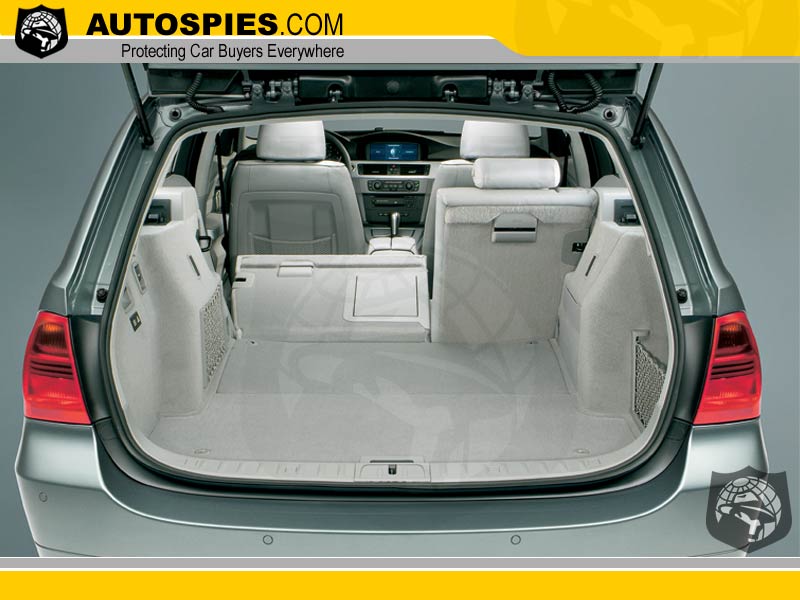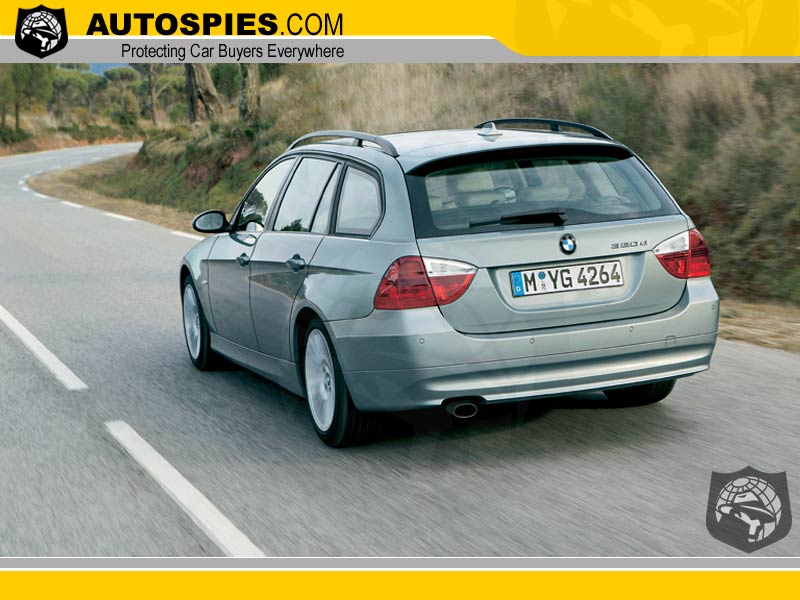THE ALL-NEW BMW 3 SERIES SPORTS WAGON

Dynamic, Elegant, Practical
The all-new BMW 3 Series Sports Wagon will make its public debut at the Frankfurt Motor Show in September 2005. With an exceptional harmony of elegance and athleticism, the Sports Wagon offers flexibility and practicality as well. Available in the US beginning in October 2005, the newest BMW Sports Wagon will continue the highly successful tradition of combining more versatile cargo space with the performance and handling of a sports sedan.
This latest generation sports wagon will initially be available in the U.S. as a 325xi model. Its xDrive all-wheel drive system endows it with remarkable traction and agility. The all-new 3 Series Sports Wagon family will expand in 2006 with the introduction of a rear wheel drive version.
Efficient and sporting
Like the all-new 325i Sedan, the Sports Wagon will be powered by BMW's new, advanced N52 3.0 liter 6-cylinder engine. This dynamic powerplant retains the unique smoothness and sound character of BMW's inline 6-cylinder format while offering more power, greater torque, even more refined delivery of power, and new technology. This includes magnesium/aluminum composite engine construction, and BMW's patented Valvetronic variable valve lift system, which replaces the conventional throttle for more efficient engine breathing and improved responsiveness. The 325i Sports Wagon is equipped with a new, standard six-speed manual gearbox ; an optional six-speed STEPTRONIC automatic transmission is available.
Unique and sophisticated design
For the first time, the BMW 3 Series Sports Wagon has been developed as an entirely different and unique car compared to the Sedan. The new Sports Wagon is largely identical to the Sedan from the front all the way to the A-pillar; the rear seat area and luggage compartment blend harmoniously with the overall style of the car's sporting, almost coupe-like silhouette. One distinctive design element is the side window area. The roofline tapers down softly and smoothly to the inclined tailgate, while the shoulder line moves up slightly, the window areas appear small and compact, as in a coupe.
More room than its predecessor
While the new 325xi Sports Wagon maintains the BMW heritage in both styling and performance - powerful, sporting, compact - it is equally impressive in its space and roominess. Length (+1.65"), width (+3.07"), height (+0.35"), and wheelbase (+1.38") are all increased compared to the previous generation Sports Wagon, providing front and rear occupants with additional space and comfort on the road. The split-folding rear seats and large cargo area offer a high degree of flexibility and utility.
Innovative equipment for even greater practical value
The 325xi Sports Wagon is provided with a number of innovative features that not only enhance everyday driving qualities, but the practical benefits of this unique model as well. For example, the luggage compartment cover ensures privacy and automatically rises together with the separately opening rear window in order to facilitate loading. Like the all-new 3 Series Sedans, the Sports Wagon comes with run-flat tires and a Flat Tire Monitor. The lack of a spare tire not only reduces the weight of the car but increases effective cargo capacity, with an additional storage box beneath the floor of the luggage compartment.
The luggage compartment floor section is available with two reversing surfaces, with tie-down points on one side to securely fasten heavy objects, and a plastic cover on the other side to be placed on the interior panels and surfaces in the luggage compartment to ensure efficient protection from dirt and scratches. A water-tight folding box beneath the floor of the luggage compartment enables the storing of items such as wet boots or other gear.
BMW's traditional attention to detail is evident with available sunshades on the rear side windows which are unusal in this vehicle category, as are the separate rear seat air vents.
Safety engineering and features: improving on a star performer
New Head Protection System (HPS). The first front-to-rear Head Protection System to be offered in the 3 Series employs a curtain-type system, which takes up less space in the headliner and can remain inflated for several seconds after deployment, especially important in case of rollover.
New seat-mounted front side-impact airbags. The 3 Series is BMW's first to employ seat-mounted side-impact airbags, as opposed to the door-mounted type of the predecessor and other current Series. In their function of protecting occupants' pelvis and thorax regions in side impacts, the seat-mounted airbags are equal to the door-mounted type, but offer greater freedom for the interior designers to achieve their functional and esthetic goals.
Automatic safety-belt tensioners and force limiters front and rear. Long standard on BMW front safety belts, these features now enhance the outboard rear belts' effectiveness as well.
New occupant-detection sensor. BMW has long employed a sophisticated electronic control strategy for managing the deployment of airbags and safety-belt tensioners. This approach to optimal effectiveness of safety systems now becomes even more precise, thanks to a new sensing mat in the front passenger seat. Called OC3, the mat is more highly sophisticated than its predecessor; it measures the weight and analyzes the pressure distribution of the occupant in order to distinguish between an adult and an infant in a child safety seat. The front passenger's airbags will be deactivated, should the driver install a forward-facing infant safety seat.
New features for protecting the driver's feet and knees. Two measures have been taken to reduce the likelihood of injuries to the driver's feet and legs:
- The footrest is designed to crush under the force of the driver's left foot in certain frontal impacts, so that the full impact force is not transmitted to his or her foot and leg.
- The Mastervac (brake master cylinder) is mounted so that as the front end deforms, it rotates, and with it the brake and clutch pedals. The pedals move forward, canceling much of the force transfer to the driver's feet and legs if they are on the pedals.


Click here to view part two